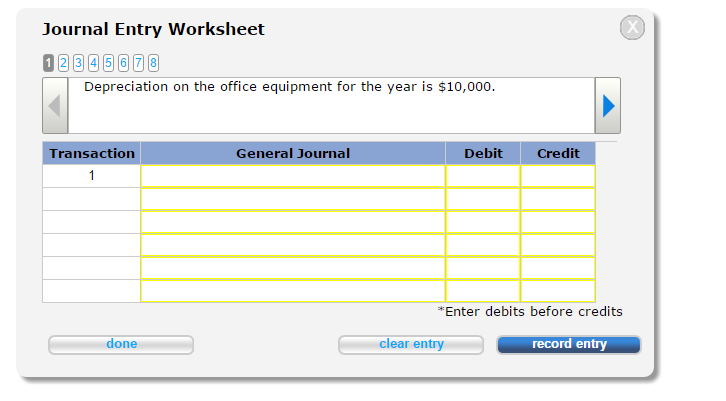Question
Pastina Company sells various types of pasta to grocery chains as private label brands. The company's fiscal year-end is December 31. The unadjusted trial balance
Pastina Company sells various types of pasta to grocery chains as private label brands. The company's fiscal year-end is December 31. The unadjusted trial balance as of December 31, 2016, appears below.



Depreciation on the office equipment for the year is $10,000.
Salaries and wages earned from December 16 through December 31, 2016 were $1,500 and will be paid on January 7, 2017.
On October 1, 2016, Pastina signed a $50,000 note that requires interest to paid annually on September 30 at 12% and will have principal due in 10 years.
On March 1, 2016, the company lent $20,000. The note required principal and interest at 8% be paid on February 28, 2017.
On April 1, 2016, the company paid $6,000 for a two-year fire insurance policy and debited the entire amount to insurance expense.
Depreciation on the office equipment for the year is $10,000.
Salaries and wages earned from December 16 through December 31, 2016 were $1,500 and will be paid on January 7, 2017.
On October 1, 2016, Pastina signed a $50,000 note that requires interest to paid annually on September 30 at 12% and will have principal due in 10 years.
On March 1, 2016, the company lent $20,000. The note required principal and interest at 8% be paid on February 28, 2017.
On April 1, 2016, the company paid $6,000 for a two-year fire insurance policy and debited the entire amount to insurance expense.
Supplies on hand at December 31, 2016 were $800.
Pastina credited sales revenue for $2,000 received in December for spaghetti to be delivered in January 2017.
On December 1, 2016, $2,000 rent was paid for December and January 2017, at $1,000 per month.
Pastina Company sells various types of pasta to grocery chains as private label brands. The company's fiscal year-end is December 31. The unadjusted trial balance as of December 31, 2016, appears below. Account Title Cash Accounts receivable Supplies Inventory Note receivable Interest receivable Prepaid rert Prepaid insurance Office equipment Accumulated depreciation-office equipment Accounts payable Salaries and wages payable Note payable Interest pay able Deferred revenue Common stock Retained earnings Sales revenue Interest revenue Cost of goods sold Salaries and wages expense Rent expense Depreciation expense Interest expense Supplies expense nsurance expense Advertising expense Credits Debits 30,000 40,000 1,500 60,000 20,000 2,000 80,000 30,000 31,000 50,000 60,000 24,500 148.000 70,000 18,900 11,000 1,100 6,000 3,000 Totals 343.500 343.500Step by Step Solution
There are 3 Steps involved in it
Step: 1

Get Instant Access to Expert-Tailored Solutions
See step-by-step solutions with expert insights and AI powered tools for academic success
Step: 2

Step: 3

Ace Your Homework with AI
Get the answers you need in no time with our AI-driven, step-by-step assistance
Get Started


